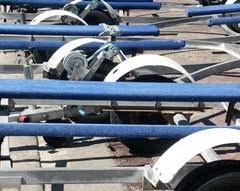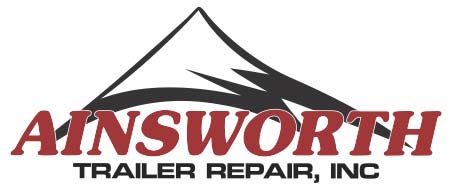 Though not as much fun as a day on the water, routine trailer bearing maintenance is the best way to prevent your boat from getting beached, fighting the effects all that repeated exposure to water can have on your trailer. A simple procedure, whether you’re the DIY or repair center waiting room type, Ainsworth has you covered…
Though not as much fun as a day on the water, routine trailer bearing maintenance is the best way to prevent your boat from getting beached, fighting the effects all that repeated exposure to water can have on your trailer. A simple procedure, whether you’re the DIY or repair center waiting room type, Ainsworth has you covered…
Tips for DIY Trailer Bearing Maintenance
Keep bearings greased, and service them at least once a year. Here’s how:
- Put your trailer axle up on jack stands/blocks, removing the lugs, followed by wheels/tires.
- Using a flathead screwdriver, pry the dust/grease cap off of the end of the wheel hub by tapping the blade under the lip. (For ‘bearing buddies’ with no lip, tap gently with a plastic mallet as you rotate the hub.)
- Remove the cotter pin at the end of the axle with pliers.
- Use a socket and ratchet to remove the wheel nut, then slide the hub off the axle shaft.
- Wipe off as much grease a possible, then clean the remaining grease out of the bearings with a good solvent. Blow dry with compressed air, if you have it. Do NOT spin bearings at high-speed with compressed air – they can explode.
- Inspect the bearings for pits, blue/black discoloration, and rust, which indicate a bearing in need of replacement – not simple repacking.
- If needed, pickup new bearings and bearing races, which are a matched pair. (Races are removed/installed with a hammer and punch.)
- Replace races as necessary, tapping them gently into place. Wipe a film of grease onto them.
- Repack wheel bearings with a high-grade of molybdenum/lithium bearing grease using a tool or the palm of your hand until grease appears on the other side of the bearing, rotating as you go.
- Put the inner bearing on the hub, seating the newly-greased bearing into the race. Coat the outer edge with sealant, then tap in until flush with the end of the bore using a mallet and socket. Place the hub into position on the axle shaft, and press the outer bearing into position in the outer race.
NOTE: If you see deep scoring, pitting, or rust on the axle shaft where the bearings sit, your axle needs replacement. - Using a torque wrench, install the axle nut washer/axle nut to specs.
- Using a castle nut, tighten the nut until snug, then rotate the hub, backing off the castle nut until the cotter pin hole in the shaft lines up.
NOTE: Too tight, and your bearings will wear prematurely. Tighten castle nut as you spin the hub until it slows. Backup one-quarter turn and push on the hub sides to check for wobble, indicating it’s too loose. Work until you achieve free turning without wobble. - Install the cotter pin.
- Replace bearing buddies, if used, greasing until the bearing buddy piston pushes outward, and pack with wheel hub with a grease gun and the same grease you put in the bearings.
- Replace the wheels and remove jack stands.
Bearing Service Made Simple
Not the DIY type? Make life easier by scheduling routine trailer bearing maintenance with Ainsworth. Schedule an appointment and drop of your hauler for service in one of our ‘Fast Lanes,’ and thumb-it through your phone in our comfy waiting room or grab a bite at an area restaurant while your rig gets repaired
Safeguard valuable boating time with regular bearing care. Schedule professional boat trailer bearing maintenance with Ainsworth Trailer Repair today.



